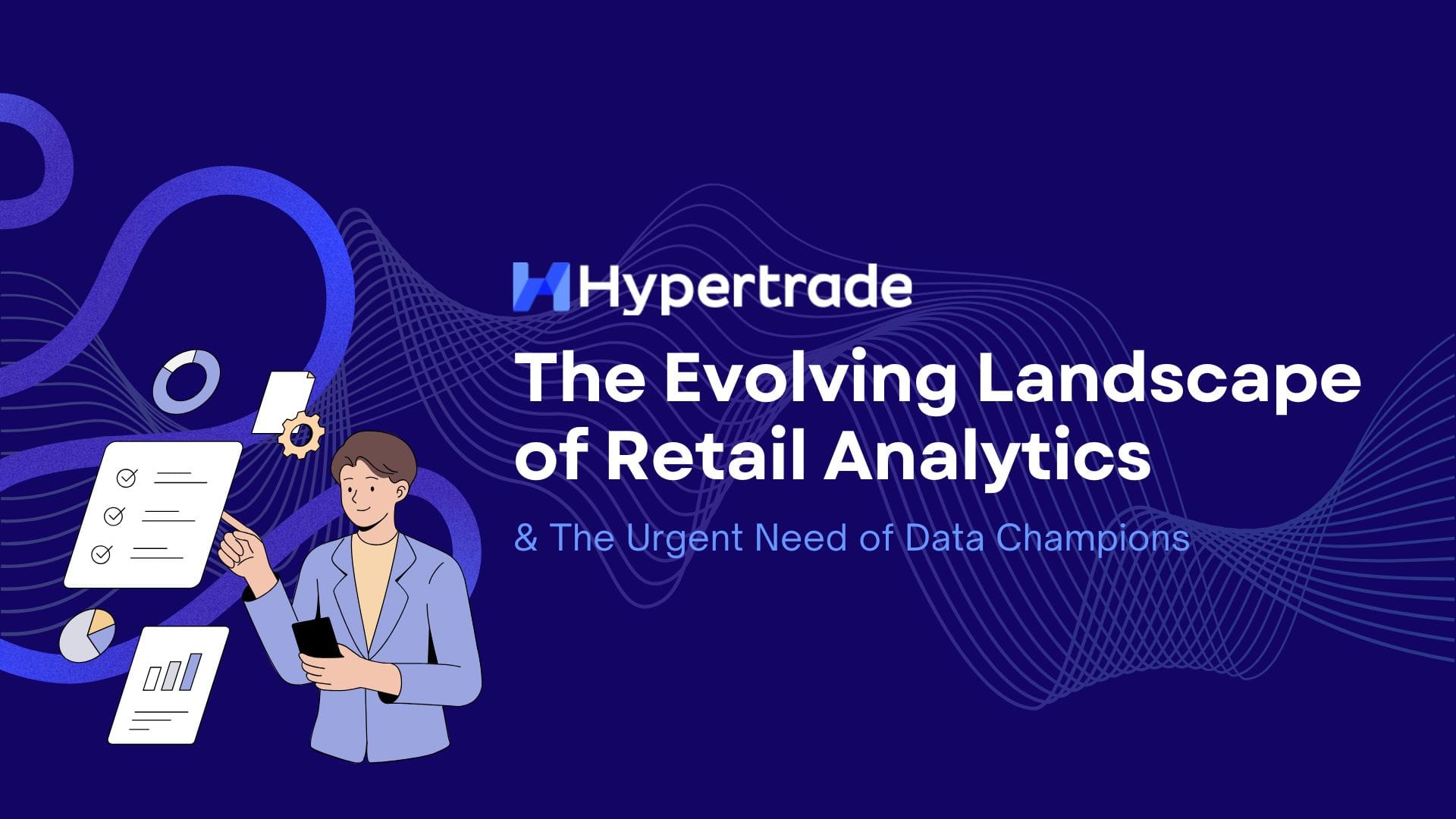The Paradigm Shift:
Microservices Architecture and the Rise of B2B Software Marketplaces – How can it
make Retail Players life easier?
There is no perfect software solution. There will always be one or several missing functionalities or features. Because of costs, data governance, internal tech strategies or required training, changing a tech solution is always
a pain in the neck. This challenge often results in frustrations: an incomplete tech solution with part of the job being done manually – or not done at all.
In the ever-evolving landscape of technology, paradigms often shift to accommodate new and innovative solutions. One such paradigm shift is being catalyzed by the development of microservices architecture and its influence on the way companies utilize professional software. Companies are now able to keep their existing solutions and use, when required, on-demand functionalities: micro services. These micro services are increasingly present and marketed through B2B software market places, a more flexible and dynamic. This article explores how the emergence of microservices architecture is reshaping the software industry, leading companies to increasingly adopt software-as-a-service (SaaS) solutions from B2B marketplaces, and the implications of this shift.
Microservices Architecture: Breaking Down the Monolith
Historically, software development followed a monolithic architecture, where applications were built as large, tightly integrated systems. This approach had its merits but also came with challenges like rigid scaling, difficulty in updates, and limited flexibility. The introduction of microservices architecture marked a transformative departure from this tradition. Microservices involve decomposing applications into smaller, loosely coupled components, each responsible for specific tasks or services. These microservices can be developed, deployed, and scaled independently, allowing for greater agility, faster updates, and enhanced fault tolerance.
The Shift Towards B2B Software Marketplaces
As microservices architecture gained prominence, a natural synergy emerged with the concept of B2B software marketplaces. These marketplaces act as intermediaries, connecting businesses seeking specific functionalities with providers who offer microservices catering to those needs. Instead of investing in developing or procuring comprehensive software suites, companies can now access individual microservices that align with their precise requirements. This trend is akin to renting software capabilities, enabling businesses to focus resources on core competencies while utilizing specialized services from the marketplace.
Benefits of B2B Software Marketplaces
1. Flexibility and Customization
B2B software marketplaces empower companies to craft tailored software ecosystems by selecting and integrating microservices that precisely match their needs. This flexibility enhances operational
efficiency and prevents the bloat often associated with monolithic software packages.
2. Time and Cost Efficiency
Traditional software development or procurement processes are time-consuming and resource intensive. B2B marketplaces expedite this process by offering pre-built microservices, significantly reducing development and deployment timelines and associated costs.
3. Scalability
Microservices architecture inherently supports scalability. When companies harness microservices from a marketplace, they can scale specific components of their applications based on demand, optimizing resource utilization.
4. Innovation Acceleration
B2B software marketplaces house a wide array of specialized microservices, encouraging businesses to experiment with cutting-edge technologies without committing to a full-scale software overhaul.
5. Maintenance and Update
Microservices can be updated individually, ensuring that the entire system doesn’t need to be taken offline for maintenance. This allows businesses to benefit from the latest features and security patches seamlessly.
6. Reduced Vendor Lock-In
The modular nature of microservices reduces dependency on single vendors. Businesses can switch between providers for different microservices without overhauling their entire software infrastructure.
Challenges and Considerations
While the marriage of microservices and B2B software marketplaces offers a promising alternative to traditional software acquisition, certain challenges must be addressed:
1. Integration Complexity
Integrating disparate microservices from various providers can be complex, requiring robust API management and middleware solutions.
2. Data Security and Privacy
The distributed nature of microservices demands meticulous attention to data security and privacy, with potential vulnerabilities at inter-service communication points.
3. Quality Assurance
The reliability and compatibility of microservices from different vendors must be thoroughly vetted to prevent potential operational disruptions.
4.Vendor Selection
Choosing reputable and reliable providers from the marketplace is crucial. An unreliable microservice could have cascading effects on the entire application.
5. Regulatory Compliance
Different microservices might have varying levels of compliance with industry regulations, necessitating careful evaluation and mitigation strategies.
Future Implications
The convergence of microservices architecture and B2B software marketplaces is poised to reshape the software industry in several ways:
1. Democratizing Technology
Small and medium-sized enterprises can access sophisticated software functionalities without the prohibitive costs of traditional development or procurement.
2. Evolving Developer Roles
Developers will increasingly become orchestrators, selecting, integrating, and managing microservices to create cohesive applications rather than building everything from scratch.
3. Shift in Business Models
Software providers are likely to pivot towards offering specialized microservices to cater to the demand from B2B marketplaces, fostering innovation and competition.
4. Redefining Vendor-Customer Relationships
The customer-vendor dynamic will evolve into more of a partnership, as businesses collaborate with microservice providers to address unique challenges.
5. Hybrid Approaches
As companies transition to microservices, hybrid models combining legacy systems and microservices will emerge, allowing gradual migration and risk mitigation.
The dawn of microservices architecture and the subsequent rise of B2B software marketplaces mark a profound transformation in how businesses access and utilize professional software. This shift empowers companies with flexibility, cost-effectiveness, and innovation while redefining their relationship with software providers. While challenges persist, the potential benefits of this paradigm shift are undeniable. As companies embrace the modularity of microservices and the convenience of B2B marketplaces, the software landscape is set to evolve into a more agile, customizable, and collaborative domain.
Hypertrade Micro-Services for Retail Player
Hypertrade offers a continuously growing choice of micro-services, enabling retail players to use only the functionality they need without having to change their complete system. Each of these micro-services are powered by automated data ingestion and machine learning engines:
- Assortment Optimization & Rationalization
- Sales Forecasting
- New Products Sales Forecasting
- Customers Segmentation
- Targeted Campaigns Management
About the writer
Frederic Etienbled is the founder and CEO of Hypertrade, a Retail Solution Platform with complete
retail suite and micro services, Driven by Retail Expertise, Data Science & Collaboration.







